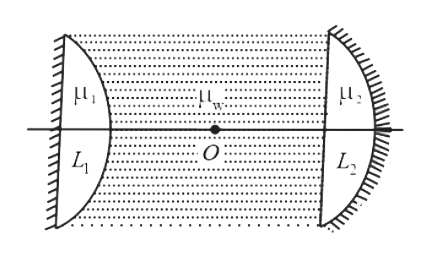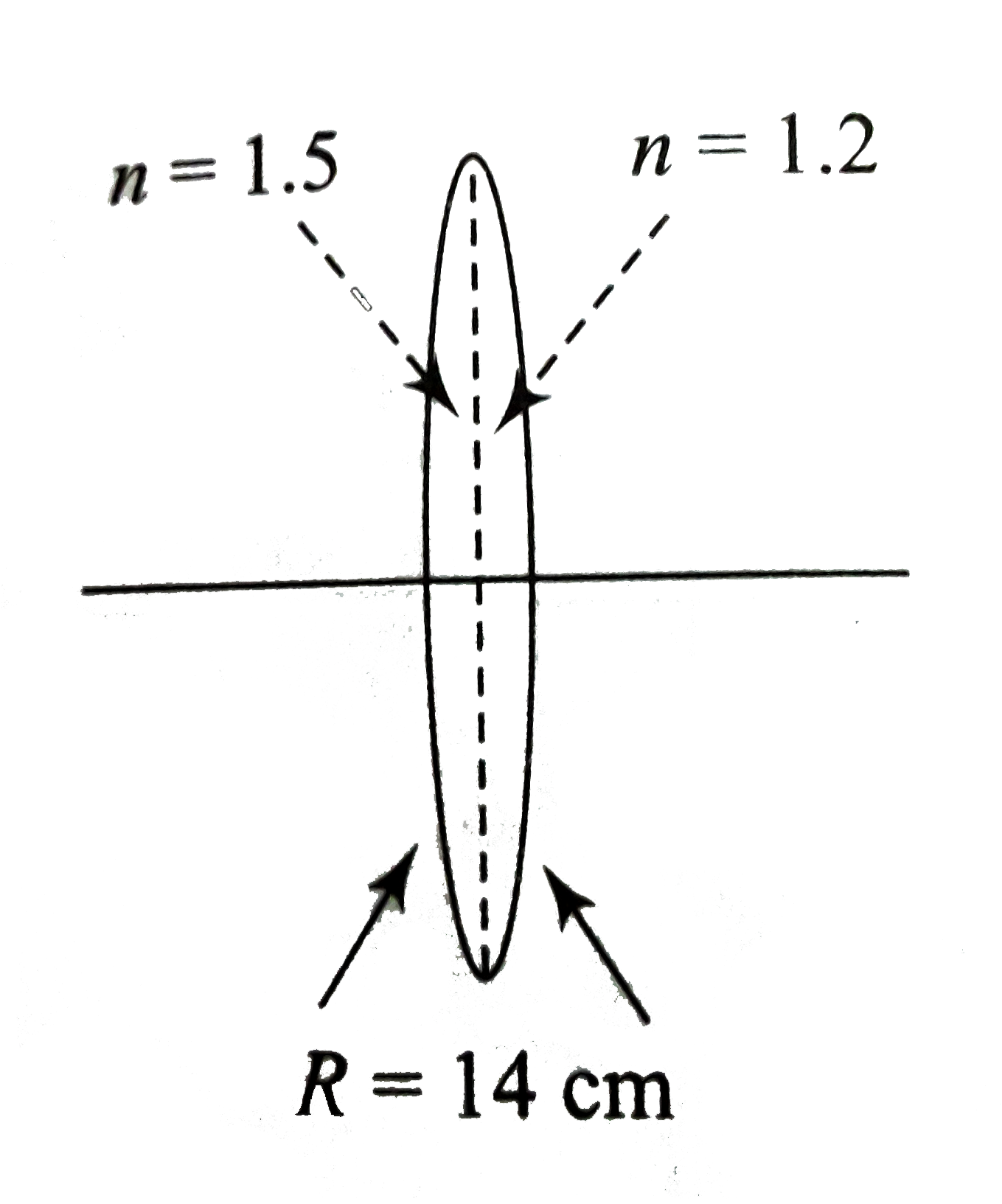A cylindrical tube filled with water (μw=43) is closed at its both ends by two thin, silvered plano - convex lenses, as shown in the figure. Refractive index of lenses L1andL2 and 2.0 and 1.5, while their radii of curvatures are 5 cm and 9 cm, respectively. A point O on the axis of the cylindrical tube. If it is found that all the images formed by multiple refractions and reflections coincide with the object, then the distance with the object, then the distance between both the lenses is

8 cm
18 cm
10 cm
14 cm
The correct Answer is:B
Step by step video, text & image solution for A cylindrical tube filled with water (mu_(w)=(4)/(3)) is closed at its both ends by two thin, silvered plano - convex lenses, as shown in the figure. Refractive index of lenses L_(1) and L_(2) and 2.0 and 1.5, while their radii of curvatures are 5 cm and 9 cm, respectively. A point O on the axis of the cylindrical tube. If it is found that all the images formed by multiple refractions and reflections coincide with the object, then the distance with the object, then the distance between both the lenses is by Physics experts to help you in doubts & scoring excellent marks in Class 12 exams.
Related Playlists
Knowledge Check
- Question 1 - Select One
A bi-convex lens is formed with two thin plano-convex lenses as shown in the figure. Refractive index n of the first lens is 1.5 and that of the second lens is 1.2. Both the curved surface are of the same radius of curvature R=14 cm. For this bi-convex lens, for an object distance of 40 cm, the image distance will be
 A−280.0cmB40.0 cmC21.5 cmD13.3 cm
A−280.0cmB40.0 cmC21.5 cmD13.3 cm - Question 1 - Select One
A bi-convex lens is formed with two thin plano-convex lenses as shown in the figure. Refractive index n of th efirst lens is 1.5 and that of the second lens if 1.2 Both the curved surfaces are of the same radius of curvature R=14cm. For this bi-convex lens, for an object distance of 40cm, the image distance will be
 A−280.0cmB40.0cmC21.5cmD13.3cm
A−280.0cmB40.0cmC21.5cmD13.3cm - Question 1 - Select One
The radii of curvatures of a double convex lens are 15 cm and 30 cm, and its refractive index is 1.5. Then its focal length is -
A+10cmB−10cmC+20cmD−20cm - Question 1 - Select One
If the radii of curvature of the two surfaces of a concave lens are 10 cm and 20 cm respectively and the refractive index is 1.5. What is its focal length ?
A−10 cmB−12 cmC−13.33 cmD−16.25 cm - Question 1 - Select One
The refractive index and the focal length of a plano convex lens are 1.5 and 50 cm respectively. What is the radius of curvature of the curved surface ?
A10 cmB15 cmC20 cmD25 cm - Question 1 - Select One
The radius of curvature of the curved surface of a plano-convex lens is 20cm. If the refractive index of the material of the lens be 1.5, it will
Aact as a convex lens only for the object that lie on its curved side.Bact as a concave lens for the objects that lie on its curved side.Cact as a convex lens irrespective of the side on which the object lies.Dact as a concave lens irrespective of side on which the object lies. - Question 1 - Select One
A double convex thin lens made of glass (refractive index μ=1.5) has both radii of curvature of magnitude 20 cm . Incident light rays parallel to the axis of the lens will converge at a distance L such that
AL=20cmBL=10cmCL=40cmDL=20/3cm - Question 1 - Select One
A convex lens of radii of curvature 20cm and 30 cm respectively. It is silvered at the surface which has smaller radius of curvature. Then it will behave as (μg=1.5)
Aconcave mirror with equivalent focal length 3011cm.Bconcave mirror with equivalent focal length 6011cm.Cconvex mirror with equivalent focal length 3011cm.Dconvex mirror with equivalent focal length 6011cm.
Similar Questions
The radii of curvature of a double convex lens are 30 cm and 60 cm and its refractive index is 1.5. calculate its focal length.
View SolutionTwo plano concave lenses of glass of refractive index 1.5 have radii of currature 20cm and 30cm respectively.They are placed in contact with the curved surface to wards each other and the space between them is filled with a liquid of refractive index 52. The focal length of the combination is (in cm)
View Solution

